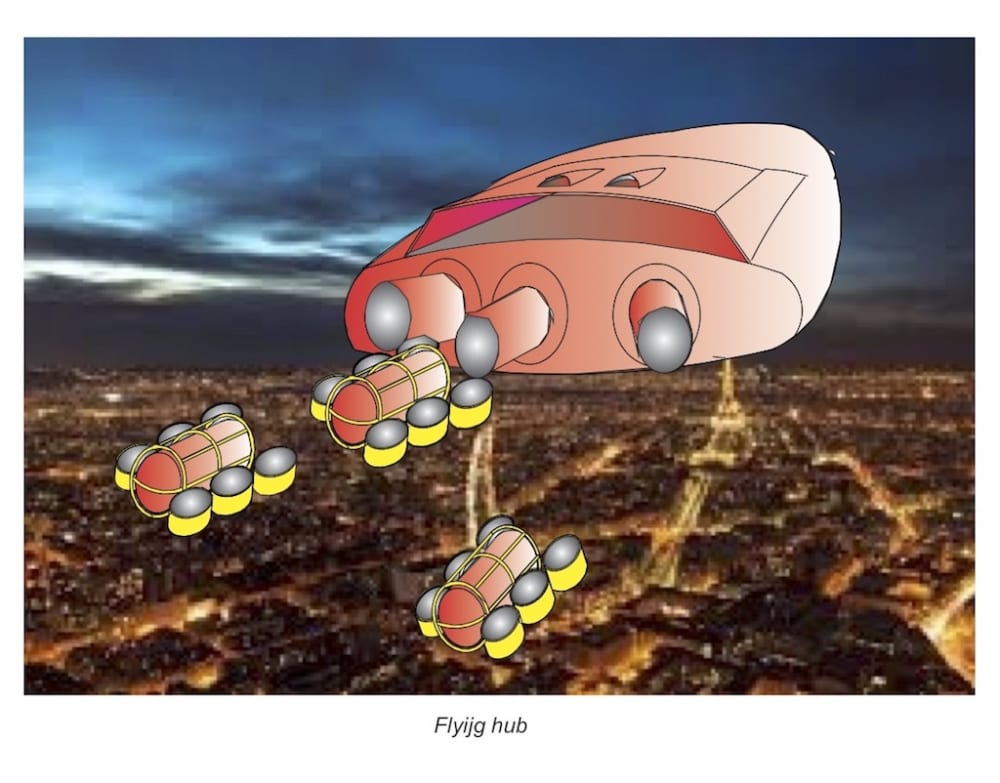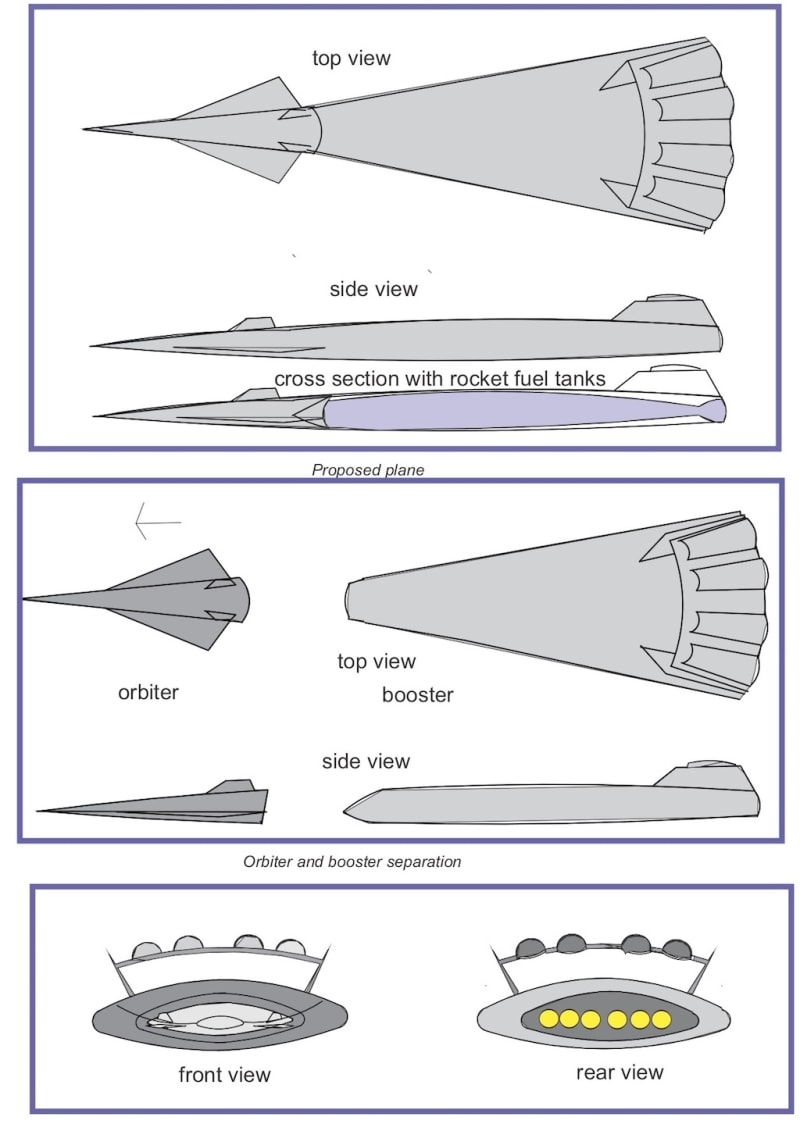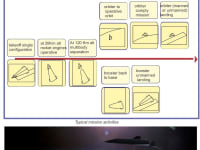SHUTTLE 2-The multibody spaceplane aircraft technology possibilities
Following recent advances in aircraft design, a possible optimal solution for a spaceplan, to carry a payload in orbit could be a multibody vehicle, having the advantages of both the SSTO and the TSTO. Considering that 90% of the load is fuel, a conventional booster is basically a fuel tank powered by engines, while a spaceplane should be an aircraft, fully reusable, capable of horizontal takeoff and landing as a conventional commercial jetliner.
Goals
Goals of the proposed spaceplane can be summarized as follows:
-Single configuration for takeoff similar to a SSTO including the booster and orbiter sections
-Horizontal aircraft mode for take off and landing
-Utilization of conventional landing strips at airports for operations
-Overhaul and maintenance similar to commercial operations in a specific hangar
-Multibody configuration for orbiter activities
- Transform spaceflight activities in routine commercial flight procedures to reduce costs and complexity of operations
The proposal
The proposed spaceplane is composed of two parts the booster, 100 mt long with a mass of 120 tons and the orbiter, 15 mt long with a total mass of 30 tons including fuel. The orbiter is located in the frontal part of the plane carrying the payload and manned when necessary, while the rear part is the booster with fuel tanks and engines. The booster will take off utilizing the conventional jet engines till a Mach 1.8 speed at 20 Km altitude, when the rocket engines will take over. The booster, once reached its operational levels (Mach 5/7- 120/150Km) will allow the detachment of the orbiter that will proceed with its own independent rocket engines and fuel to perform the mission goals, will turn back and land at the departing airport for maintenance and refueling. The booster will be powered by a combination of jet and rocket engines for the different speeds. The orbiter, at the same time, will proceed to its mission targets and deliver its payload , usually at an orbital station , through a transfer system based in containers that would automatically enter and depart the station. With its new payload the orbiter will return to its departing base and deliver the payload in its container. Such activities will be performed like a conventional commercial aircraft operation. The vehicle, after fast overhauling, reassembly and refueling will be reutilized with a few hours gap. In this way we believe that launching costs could be reduced by an order of magnitude, including major reductions of the logistics share and highly simplified operations.
Like this entry?
-
About the Entrant
- Name:Giorgio Gaviraghi
- Type of entry:teamTeam members:Giorgio Gaviraghi
Sergio de Paulo
Iramaia Jorge de Paulo
Denise Cardoso Gonçalves - Patent status:none








